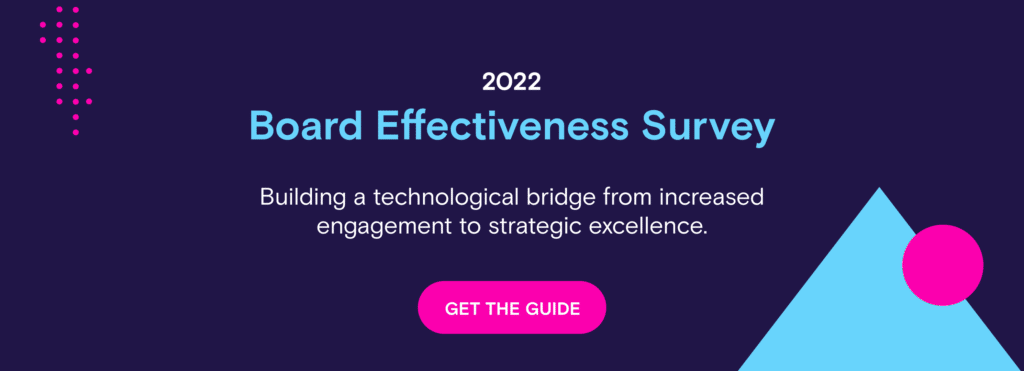
Diversity in its many forms is critical to running a successful business. Here's how to be intentional about building a diverse board for your organization.
Imagine a company has created an incredible product intended for female buyers. Now imagine you’re a fly on the wall at a board meeting, and you notice something odd. Every single board member is a man.
It’s a real-world scenario that plays out time and time again, including in the past of Dan Rossignol, co-founder of JKURV. When Dan lived out that storyline in real life, it didn’t end well for the company in question.
When most people hear the word diversity, they picture cultural diversity. And while a board that is culturally diverse is desirable for many reasons, it’s actually just one layer of the diversity puzzle.
Diversity in its many forms is critical to running a successful business, and it’s often overlooked when it comes to the boardroom.
“If everybody is the same, then you’ll go in the same wrong direction time and time again,” Dan says.
We tapped five experienced board members and founders to break down what diversity means, why it’s so important, and how you can build a thriving, diverse board of your own.
Incorporate Diverse Skill Sets
Every board, for-profit and nonprofit alike, needs highly skilled individuals who bring specific talents to the table.
These individuals will likely be diverse in ways that go beyond their resume, but identifying deep expertise in distinct areas is key to success.
4 Essential Board Personas
While every board is unique, Jeremy Brown, founder of Startups Give Back and board member for Sea Hugger, says you can break down the essential players of nonprofit boards into 4 categories:
- The Industry Connector
- The Accounting Wizard
- The Nonprofit Expert
- The Organization Authority
This recipe is largely the same for for-profit boards, with the exception of No. 3. You can dive deep into the above categories by reading the full blog post based on our interview with Jeremy, but every board needs someone steeped in industry connections that are relevant to the business, a numbers whiz, and a participant who knows the company or nonprofit inside and out.
“The board is far removed from the inner workings of the organization. It’s important to have someone on the board who brings that institutional knowledge, whether it’s the executive director or somebody else,” Jeremy says.
When it comes to identifying the exact skill sets your board needs, Jeremy suggests starting with a stark audit of your organization’s efficiencies and inefficiencies, then seeking out board members in the same way you look for paid team members. Collectively, your board should possess expertise that—when combined—propels the company forward.
Read more about the breakdown of Nonprofit Board Responsibilities.
Seek Out Diverse Backgrounds
In addition to seeking board members based on professional prowess, it’s also important to consider the other holistic aspects that comprise diversity.
Types of Diversity
Diversity can include factors such as the following:
- Race
- Gender
- Age
- Religion
- Education level
- Political beliefs
- Life experience
- Geographic background
- Socioeconomic status
For Nina Butler, a board member of the nonprofit Everyday Boston, diversity in all its forms is essential, but most important is geographic location. Everyday Boston’s mission is to break down stereotypes and increase connections by surfacing the stories of real Bostonians.
“We really need people who have lived their life in Boston, who have moved around several times,” Nina says. “We have representation from old and young. We have representation from at least four different neighborhoods in Boston and counting. We have different representation racially, religiously, and in terms of overall experiences.”
Doing what’s right for your company or organization requires checking your biases at the door. Being inclusive isn’t about being charitable to others. It’s about making valuable connections that go beyond skin deep.
Learn How Smart Diversity Can Lead To Competitive Advantage.
Empower Diverse Voices
It’s not enough to bring together skilled, diverse talent in one room. You also have to ensure the voices you bring into the boardroom have an equal chance to speak.
Even among a group of people who are vastly the same in terms of race, gender, education, etc., you will see wildly different communication styles and preferences. With a truly diverse group, such differences can be even more pronounced.
Methods to Highlight Diverse Communication Styles
A company’s CEO or founder should find ways to ensure every board member is heard, Dan says. Strategies to consider include the following:
- Collaborate via a shared document
- Utilize the chat function during virtual meetings
- Request feedback from specific board members
- Encourage members to email ideas in advance
At a previous company, Dan’s team often used “pre-reads” to engage specific board members in advance of the meeting.
“We would say, ‘This looks tailor-made for you, we’d love for you to come with your thoughts on this particular slide.’ That way it becomes less focused on diversity and more a function of what we think they have expertise in,” Dan says.
Looking for more communication tips? Read 6 Tips for Effective Board Communication.
Recruit Diverse Talent
Not everyone has a rich, diversified personal network to draw upon when searching for board members. That’s why you can also leverage recruitment and advertising strategies that support your endeavor.
Caroline Cotto, board president for the Upcycled Food Association (UFA) and Co-Founder & COO of Renewal Mill, says you need to think about what and where you’re posting when seeking new board members or program participants.
Create Formalized Systems
Rather than leave diversity to chance, Caroline recommends creating formal systems to:
- Offer reduced fees for participation/membership for certain groups
- Publish press/recruiting materials on diverse platforms
- Use grant funding to host programs for underrepresented members
“Where are you putting out press and outreach? If it’s just on LinkedIn, and everybody is white and works in consumer packaged goods, that is who you’re going to get back,” Caroline says.
The same rule goes for the visual marketing materials that define your organization. Those items can either attract—or deter—potential board members.
“If you only see white people, and you’re a Black founder from Texas, are you going to want to join that organization?” Caroline asks. “People want to see themselves on the board. That’s who they’ll want to work with.”
Don’t Assume Candidates Will Come to You
When many first-time board members join a board, there is an accompanying sense of imposter syndrome. If you see a candidate who has exactly what your board is seeking, don’t hesitate to approach them and cheer them on.
“It’s easier to have someone advocate for you, rather than nominate yourself and fight those demons about ‘why you,’” Caroline says.
Be vocal about your faith in the talents of prospective members. Your words of support may be just what they need to take the leap.
Here’s how you can Increase Diversity for a Nonprofit Board of Directors in 8 Steps.
Pursue Diversity with Concrete Goals and Firm Intentions
Board diversity brings a wealth of experience and perspectives to an organization, but you won’t achieve it by waving a magic wand. Diverse boards form thanks to a mission-driven purpose and a systematic process.
“You have to be intentional about it. It’s easy to say we’re going to hire the best candidate, but if you’re not looking in the right places and you’re not seeing diverse candidates, then you’re still just going to hire the person who is like everybody else,” says Sam Jacobs, founder and CEO of Pavilion.
Caroline agrees. “If you’re not intentional about it, you’ll end up with 30 lacrosse bros from your alma mater,” she says.
Think About Diversity Early and Often
The bottom line is that diversity doesn’t just happen. It has to be discussed starting on day one—and far beyond. For example, when building out the Upcycled Food Association, Caroline asked herself:
- How do I build a board that reflects the values of our organization?
- How do I create a diverse C-Suite while under pressure to fill roles quickly?
- What diversity target percentages do we want to hit?
Concrete goals could include the desire to form a board that is 50% female or has 30% of members in various age ranges.
No matter what path you choose, don’t think of diversity as just a quota to be met. Instead, think of it as a process that ensures high ethical standards and provides true credibility when you say you picked the best person for the job.
Ready to hold your board meetings to a higher standard? OnBoard’s board management software can improve the quality of every meeting thanks to an intelligent, cloud-based portal.
Want to fuel your startup for success? Get started with a free trial of OnBoard.
About The Author

- Adam Wire
- Adam Wire is a Content Marketing Manager at OnBoard who joined the company in 2021. A Ball State University graduate, Adam worked in various content marketing roles at Angi, USA Football, and Adult & Child Health following a 12-year career in newspapers. His favorite part of the job is problem-solving and helping teammates achieve their goals. He lives in Indianapolis with his wife and two dogs. He’s an avid sports fan and foodie who also enjoys lawn and yard work and running.
Latest entries
 Board Management SoftwareApril 23, 2024How to Form a Crisis Response Team (Step-by-Step)
Board Management SoftwareApril 23, 2024How to Form a Crisis Response Team (Step-by-Step) Board Management SoftwareApril 12, 2024Board of Directors Compliance Training: 5 Best Programs
Board Management SoftwareApril 12, 2024Board of Directors Compliance Training: 5 Best Programs Board Management SoftwareApril 10, 20245 Best Compliance Training Programs
Board Management SoftwareApril 10, 20245 Best Compliance Training Programs Board Management SoftwareMarch 28, 20245 Advantages of an Initial Public Offering
Board Management SoftwareMarch 28, 20245 Advantages of an Initial Public Offering



